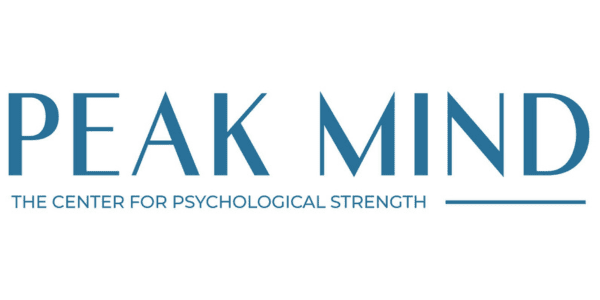WHY IS THIS DECISION SO HARD TO MAKE? HOW TO OVERCOME INDECISIVENESS
Why is this decision so hard?!?
I’ve heard myself – and so many others - voice that question, with more than a little frustration, countless times. (The most recent being this morning as I was trying to decide what to write about). We make hundreds of decisions a day – when to wake up, what to eat, what to wear, whether to say yes or no to whatever request. Some of these decisions are easy, and we make them with very little deliberation. Some, however, feel excruciatingly difficult, and the degree of difficulty doesn’t necessarily match the stakes.
Here’s an example. A few years ago, I was in a shoe store deciding on a pair of Bobs (a super comfortable Tom’s slip on shoe knock off). AN HOUR LATER I finally made a purchase. Mind you, I didn’t spend that hour deliberating among different styles of shoes or trying different pairs on. I spent that hour choosing between different colors of the same shoe. How much does that really even matter? In the grand scheme, this was a very low stakes decision – the color of my shoes is not going to make or break my life experience - and yet I spent a precious hour of my life stuck in the decision-making trap.
The Decision-Making Trap
The DMT is the endless back-and-forth, round-and-round mental process we call “deciding.” Sure, there’s a level of analysis required to make a decision: identify the decision to be made; identify the possible options and their likely outcomes; weigh those options and outcomes against our interests and goals; make a choice. Only the problem comes in when we get bogged down in those steps, looping repetitively without gaining any additional clarity or insight. This overanalyzing – the DMT – keeps us stuck, preventing us from actually moving forward with a decision. It’s exhausting
The DMT is based on the faulty belief that continued analysis – going round-and-round - will help us make a better decision, avoiding regret and mistake. In reality, though it eats up our time and mental energy and, more often than not, doesn’t deliver on the promise of the right choice…because there isn’t one.
The Paradox of Choice
We tend to believe that choice is a good thing. Deep down, we believe that the more choices we have the better. And, in the DMT, we want to consider ALL the options.
Here’s the twisted part…the human brain doesn’t actually do well with a lot of choice. In fact, psychological research has shown that the more choices we have, the less happy we tend to be with any choice that we make.
That’s right. We tend to be happier with our choice, regardless of what we actually choose, when there are fewer options to choose from.
Seems counterintuitive, but it’s true. Frankly, it’s also a lot easier to bypass the DMT and make a choice when there are fewer to options to consider.
Why Decisions Can Be So Hard
Sometimes it isn’t the presence of too many choices that snares us in the DMT. It’s fear of making the wrong decision, however “wrong” may be defined.
Our desire to avoid making the wrong decision implies that there is, in fact, a right one. Like somehow there is a correct color of shoe. The reality? There is no “right” in many cases…or at least there’s no way to determine the right decision in advance. It’s only in hindsight that we can know if something was right for us.
Similarly, we believe that there is a “best” decision. The issue is that we often don’t even know what “best” is. Take, for example, a super low stakes decision like what to eat for lunch. If you get stuck in the DMT pursuing the “best” choice…how will you even know what that is? Do you mean best in terms of nutrient density? Cheapest? Tastiest? Easiest to make? Fastest? Lowest calorie? There is no objective “best” here. You’ll have to drill down to what matters, and even then, there may not be a clear cut best. Best is often an illusion, and trying to find it will get you stuck.
Sometimes what we really mean by the best or right decision is the one that will cause us the least amount of future pain or regret. We get stuck in the DMT because we believe that the results of this decision will have a significant impact on our future happiness. Some decisions certainly do, like who to marry or what job to take, but many decisions that feel important have relatively little impact in the long run. We adapt to them and return to baseline. Still, it can be overwhelming to think that if we make the wrong decision, our future selves will suffer. In reality, though, it’s our current selves who are suffering in the DMT. Very few decisions are truly high stakes, and those that are, often are not permanent. For better or worse, we can undo many decisions – or more aptly, make new decisions to course correct when needed.
Getting Out of the DMT
We only have so much decision-making capacity in a day, and getting stuck in the DMT zaps our bandwidth. Here are a few strategies that can help us avoid the DMT and get better at making good decisions without the added stress.
1. Snap decisions
One of the most useful ways to get better at making decisions more quickly and comfortably is to practice snap decisions. Pick quick! Then go with it. This will likely feel wrong and uncomfortable at first, but with practice, you’ll get better and better at it.
Snap decisions are helpful for a couple reasons. First, they help you get comfortable trusting your gut because you’ll practice side-stepping the DMT and, with repeated experience, realize that you don’t actually need nearly as much of that draining back-and-forth to make a decision. Second, there may be times when you make the “wrong” choice. Great! You’ll get a chance to experience that and realize that it really isn’t that big of a deal. This will undermine the fear that keeps so many of us stuck.
2. Limit your choices
Knowing the paradox of choice means that you can create conditions to maximize your happiness. Resist the urge to look at every single available option on amazon or google or the menu or the dating app. Let yourself look at a few, then make the choice. Again, this may be uncomfortable. You’ll know that there are more choices out there and you could be missing out on something better, but experiment with it. See if FOMO is worth it or if you find yourself happier and less stressed by going with the first option that seems good enough?
3. Use these questions to get unstuck
- Is this really a high stakes decision that’s worth my time and energy?
- Will spending more time on this shed more light on the right decision, or am I just going round-and-round?
- If I had a crystal ball and knew I would be happy regardless of what I decided, what would I choose?
- If I had a gun to my head and had to decide right this second, what would I choose?
“You can't make decisions based on fear and the possibility of what might happen.”
― Michelle Obama

Written by Dr. Ashley Smith
Peak Mind Co-founder


